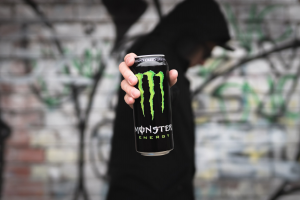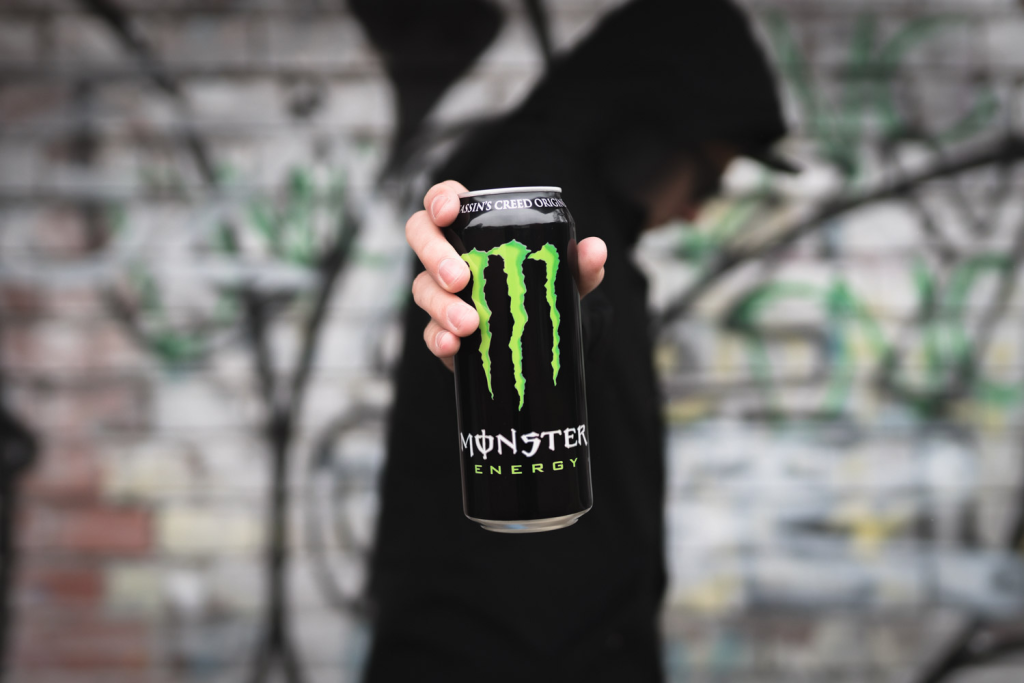 Resilient beverage segment continues to deliver
Resilient beverage segment continues to deliver
In successfully facing up to challenges such as rising health concerns and vigorous competition from hot coffee, energy drinks have already proved themselves to be both adaptable and resilient.
While the runaway growth of a few years ago may have slowed slightly, the now mature segment has positioned itself as a centrepiece of convenience store profitability for many years to come. Brett Barclay, a director with Convenience Measures Australia, says energy drinks remain the number one category for basket penetration, accounting for 22% of all ready to drink beverages.
The landscape, of course, is dominated by major players such as Frucor Suntory with its V and Rockstar brands, and by Red Bull. Coca-Cola Amatil which is responsible for the Mother brand, has also been investing heavily in the category since acquiring the long-term distribution contract for the Monster brand in 2016.
Energy drinks are a natural fit with convenience customers who tend to be on the move and are seeking a lift to keep them going through their busy days. Red Bull says consumption occasions may include ‘taking a break on the road, during lectures and study sessions, at work, while doing sports, or going out day and night’.
Energy drinks sell consistently through the day, but particularly well in the morning in line with the consumer’s need for a pick me up. Frucor Suntory says it is a common misconception that energy drink consumption is dominated by the blue collar demographic and students.
“The white collar group drinking energy drinks is actually the biggest,” said Fucor Suntory Shopper Activation Manager, Cindy Goodridge. “The main reason for drinking energy drinks is people need mental and physical invigoration at any time of the day.”
The energy drinks convenience shopper is generally on a different mission to the energy drinks shopper in grocery. In convenience, customers are buying mainly chilled singles for direct consumption, while in grocery they may buy ambient multipacks for later consumption. There are shoppers for big and small sizes of drinks as well as different formats such as cans and bottles, so it is important for stores to make sure they have a good variety of both, depending on market share and local demographics.
The real key to convenience stores maximising their market share of energy drinks sales though is to focus on getting their ranging right. Stores need to make sure a variety of market leading brands is ranged so they can cater to different consumers. Each energy drink brand should have its fair share of space to reflect its sales. Energy drinks are best to be brand blocked, as shoppers will primarily shop by brand. All the best sellers should be highly visible and priced correctly.
Operators need to be aware of the sales peaks in their store and ensure they have enough stock on hand. If customers do find their favourite energy drink is unavailable, they may leave without making a purchase at all or they will possibly look for something other than energy which may deliver a lower value sale.
Frucor Suntory says the fact that energy drinks have a relatively long ‘best before’ date makes stock management easier.
“Stock should be sufficient to deal with an increase in demand, especially around promotions and new launches,” said Frucor Suntory’s Cindy Goodridge. “C-Stores can lift their market share by making sure the right products are available, visible, rightly priced and ideally located at several places in store to drive impulse buying.”
Having products displayed at different locations such as in the fast lane, in the fridge, and on ambient display is a highly effective way to maximise sales. The secondary placement can remind people who are not walking to the fridge of what is on offer. The second display can be ambient, but a secondary fridge near the checkout will drive the impulse buy even more.
Coca-Cola Amatil says that individual operators tend to know their consumers best, and are therefore best placed to make the merchandise decisions that are right for their business.
“Data indicates that energy drinks are the number one category for convenience stores and command the highest average price per litre and therefore there is an opportunity if energy drinks are allocated a prominent impulse space,” said a Coca-Cola Amatil spokesperson. “Every business is different and we work with customers on a range of promotion activities tailored to their business goals and consumer tastes and preferences.”
The potential of energy drinks goes way beyond the ability to create a beverage sale. According to Convenience Measures Australia, energy drink shoppers are 34% more likely to have a snacking product in their basket than the average beverage shopper. Bundling energy drinks with food products is then a clear way to lift sales, whether customers are looking for a meal or just a snack to have later. These promotions can grab shoppers’ attention and increase basket size.
While promotions and off locations are an important way to remind people to buy and to get new people to try, the manufacturers have a part to play too. Market research company, Euromonitor International, says the regular introduction of new variants has been vital in maintaining sales momentum in the category.
“Product innovation remained an important strategy for providing consumers with fresh options and sustaining interest and relevance,” said Euromonitor International research analyst, Sara Agostino. “Flavour innovation plays a significant role in generating growth, particularly amongst consumers purchasing energy drinks on impulse.”
All of the leading manufacturers then regularly introduce different flavours in an effort to keep the category fresh and exciting.
As well as its regular energy drink and its sugar free and zero variants, Red Bull’s ‘Editions’ range includes Tropical, Coconut and Berry, and Ruby Grapefruit. These have proved to be highly effective in driving incremental sales.
Coca-Cola Amatil says the experience of mature markets overseas indicates that the energy category has an opportunity for growth by engaging new consumers with new flavours, new packaging, and functionality expansion. Its recent innovations in this space have included the Monster Energy athlete range with ambassadors Valentino Rossi and Lewis Hamilton, as well as the new Mother flavours; Kicked Apple & Passion.
“Consumers taste preferences change and it is important to respond to their needs,” said a Coca-Cola spokesperson. “One way of achieving this is by offering a variety of flavours, as well as low sugar and no sugar variants.”
Monster currently has three sugar-free variants in Australia, including Absolute Zero, Ultra Sunrise, and Zero Ultra.
Frucor Suntory also regularly introduces rotational flavours and, last year, enjoyed great success when it released Rockstar in both lime freeze flavour and guava flavour. It also generated considerable excitement by releasing V Pure last September. Containing the natural ingredients of sparkling water, apple juice, lemon juice, natural V flavour and guarana, the product seeks to draw new consumers to energy drinks who may have previously avoided them due to concerns about sugar or artificial ingredients.
Frucor Suntory’s Cindy Goodridge says it is important to keep the balance right.
“Better for you energy drinks are getting increasingly important in line with the ongoing health trend,” she said. “V is dedicated to keep driving category growth through better for you innovations such as V Pure.”
It is not just the major players who have noticed more consumers showing a preference for products that are naturally functional and/or naturally lower in sugar. The dynamic energy drinks segment has long been one which has attracted new entrants eager to offer a point of difference. One of the most intriguing recent arrivals has been Kanguru, which uses only the highest quality, scientifically selected botanicals as natural energy supplements.
The beverage was developed by Dr David Kitchen, founder and CEO of Red Kangaroo Beverages, who says the drink’s unique ingredients make it stand out from the crowd.
“As an energy drink consumer myself I realised that there was nothing like this on the market and I saw a need … so I set out to create it,” he said. “I took a systematic evidence based approach to find the right ingredients and formula to get the taste right and, after a four-year journey, my dream has come to fruition.”
Kanguru’s blend includes 13 tailored ingredients, with five unique, natural botanicals – Korean Red Ginseng, Yerba Mate, Guarana, Schisandra and Green Tea – as well as vitamins, Taurine, caffeine and natural flavours. More than 90% of the caffeine is derived naturally through the botanical ingredients and there is no sugar.
“From the start, quality was the most important thing to me and we have had great feedback from consumers,” said Dr Kitchen. “We are still rolling out the product across the country and have got great point of sale back-up for the product and strong marketing support.”
Kanguru comes in a slimline 250ml can with matt black and gold design and has already gained good distribution across Australia, including in a number of independent IGAs.
Although it may no longer be the new kid in the block, the energy drinks segment then is still creating plenty of excitement and delivering big sales in convenience. The long-term outlook also remains exceptionally strong with busy Australians always needing energy lifts as they cram ever more activities into their already packed days. Stores which leverage effectively on new product developments and which have the right price, product, placement and promotion can expect to get plenty more profits lift from the rapidly evolving energy drinks category.
* Convenience & Impulse Retailing magazine would like to thank Frucor Suntory, Red Bull, Coca-Cola Amatil, Red Kangaroo Beverages, Euromonitor International, and Convenience Measures Australia for supplying information for this article.
AT A GLANCE
- Energy drinks sell consistently through the day, but particularly well in the morning in line with the consumer’s need for a pick me up.
- Displaying products at different locations such as in the fast lane, in the fridge, and on ambient display can help maximise sales.
- The regular introduction of new variants has helped maintain sales momentum in the category.
- Energy drink shoppers are 34% more likely to have a snacking product in their basket than the average beverage shopper

